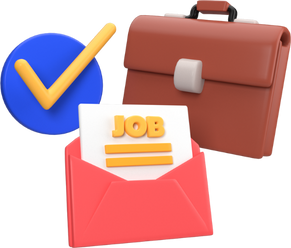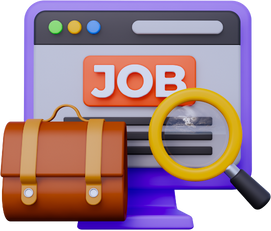In 2025, LinkedIn isn’t just a professional networking site. It’s becoming your personal career AI. Whether you’re a student, a job seeker, or a seasoned executive, the platform’s newest updates are designed to help you get hired faster through smarter, data-driven tools.
From AI-generated insights to interactive resumes and real-time networking recommendations, the latest LinkedIn 2025 features are changing the way professionals find and land opportunities.
Here’s what’s new, what’s powerful, and how you can make the most of it.
1. AI Job Matching Gets Smarter
If you’ve ever felt like job recommendations on LinkedIn missed the mark, LinkedIn AI has had a major upgrade in 2025. The new AI Job Matching system now analyzes not just your title or skills, but also your tone, phrasing, and even activity on the platform.
Using machine learning models trained on millions of successful hires, LinkedIn can now suggest roles you might not have thought of but fit perfectly based on your hidden skills and growth trajectory.
Example: A “Social Media Assistant” might start seeing matches for “Content Strategist” if they’ve consistently shared analytical posts or completed strategy-based LinkedIn Learning courses.
How to make the most of it:
Keep your Skills section up-to-date, interact with content related to your target roles, and take a few LinkedIn Learning assessments. Every click teaches the AI who you are and who you could be.
2. The Smart Profile Assistant
One of the most exciting new LinkedIn features in 2025 is the Smart Profile Assistant an AI-powered editing tool that helps you refine your About section, create a standout LinkedIn headline, and even optimize your summary with keywords recruiters actually search for.
Instead of guessing what to write, you can now describe your goals in natural language; something like, “I’m a project manager shifting into sustainability”. Then the AI will generate keyword-rich suggestions designed for recruiter visibility.
Example:
Input: “I manage projects for a construction company.”
Output: “Project Manager | Sustainable Construction | Driving Eco-Focused Solutions for Urban Growth”
How to make the most of it:
Use AI-generated drafts as a starting point, but personalize them. Recruiters still value authenticity over automation.
Read more:
3. Skill Verification 2.0 and Interactive Resumes
Recruiters trust data. And in 2025, LinkedIn’s new Skill Verification 2.0 feature makes it easier to prove your abilities, not just list them. Skill Verification 2.0 allows professionals to record micro-demonstrations of their work, attach portfolio links, or connect results from other platforms like GitHub, Behance, or Google Analytics.
While Interactive Resumes aren’t an official LinkedIn 2025 feature yet, the trend toward dynamic, multimedia profiles is growing fast. Recruiters increasingly want to see your work, not just read about it and thanks to tools like Claude, Canva, and Notion, you can already build your own interactive portfolio that integrates seamlessly with LinkedIn.
Here’s how:
- Use Claude to Generate an Interactive Outline:
Prompt Claude (Anthropic’s AI writing assistant) to create a storytelling-style resume. For example:
“Claude, help me write a narrative-style resume showcasing my top three projects with links, visuals, and measurable results.”
The AI will structure your career story as a clickable timeline or showcase piece which you can host online and link directly in your Featured section on LinkedIn. - Add Media & Proof:
You can embed videos, links, PDFs, or case studies to show real outcomes.For instance, an analytics screenshot, a short demo clip, or client feedback.
Link It on Your Profile:
Once your interactive resume is live, paste the URL into your LinkedIn “Featured” or “About” section. It’s not the same as a built-in LinkedIn feature, but it gives recruiters an interactive way to engage with your work right now.
4. Smarter Networking with AI Communities
Networking just got personal. LinkedIn 2025 introduces AI-powered “Micro Communities” that help you connect with professionals based on specific career goals or transitions.
Imagine being recommended to a group of “Marketers entering Tech” or “Designers in AI Startups” automatically. The platform’s algorithm now analyzes your activity and invites you to curated spaces where you can exchange ideas and discover niche LinkedIn jobs before they’re public.
How to make the most of it:
Join communities aligned with your interests and participate regularly. Engagement boosts your profile’s visibility in recruiter feeds and unlocks exclusive job postings. Read more
5. The Microsoft Copilot Integration
Since Microsoft owns LinkedIn, it’s no surprise that 2025 brings deeper Copilot integration into the platform.
You can now use Copilot (built into the LinkedIn interface) to help you draft posts, prepare interview answers, or summarize recruiter messages. It even provides feedback on tone, helping you sound more confident and professional in your job outreach.
Example: Ask, “Copilot, write a message to thank a recruiter for an interview,” and you’ll get a polished, natural-sounding note in seconds.
How to make the most of it:
Use Copilot to save time—but always tweak the results. The personal touch still matters, even in the AI era.
Learn more : Expanding Copilot into LinkedIn
DreamShift’s Tip: Pair These Features with the Right Resources
While these new LinkedIn features are powerful, their impact depends on how you use them. That’s where DreamShift’s Resource Library can help.
From LinkedIn banner templates to profile optimization checklists, DreamShift offers free tools to make sure your new AI-assisted profile looks professional and cohesive. Use these resources to complement LinkedIn’s latest updates and stand out from the crowd.
Final Thoughts
In 2025, the line between technology and talent is thinner than ever. LinkedIn AI doesn’t replace human effort it amplifies it. By using these tools strategically, you can make your job search smarter, faster, and more intentional.
Your next opportunity might not just be a connection away it could be an algorithm away.







